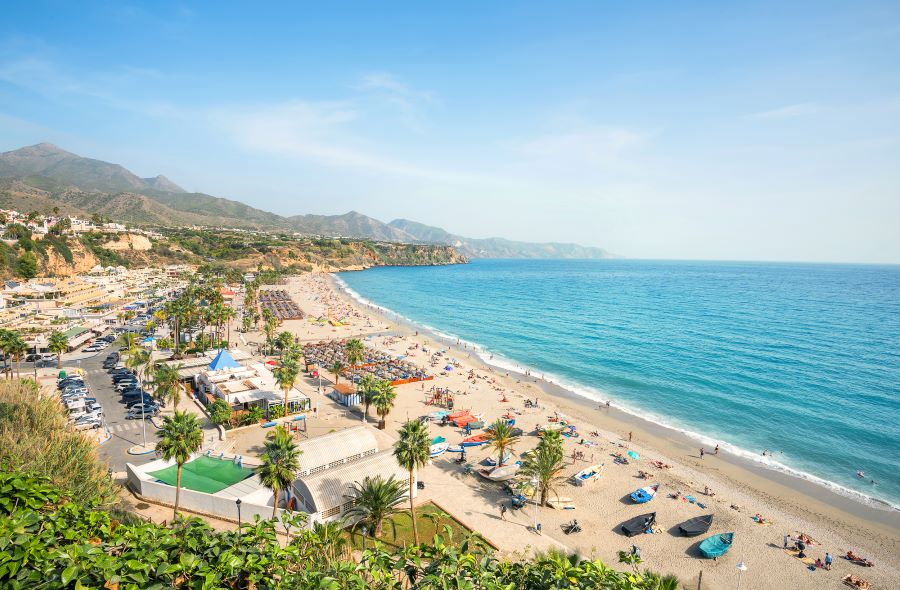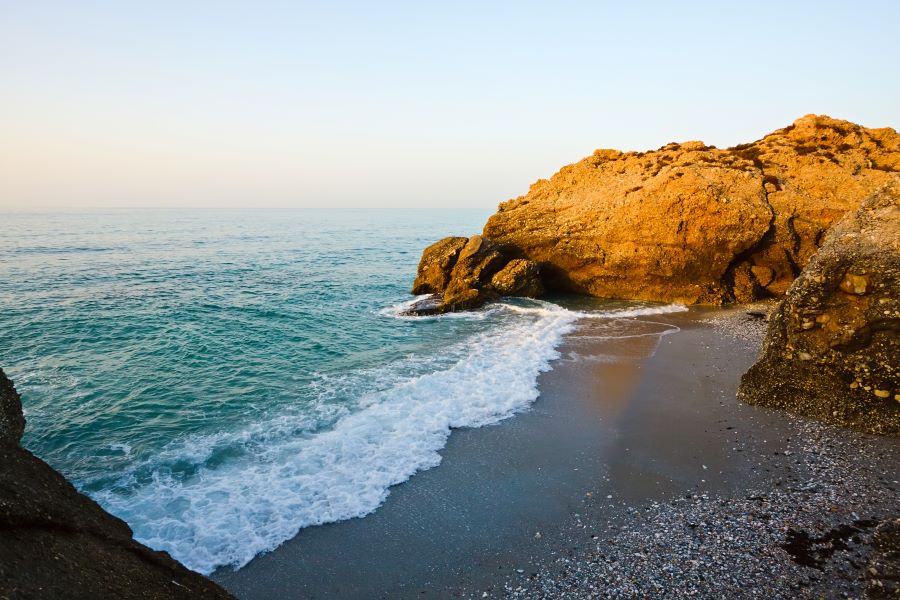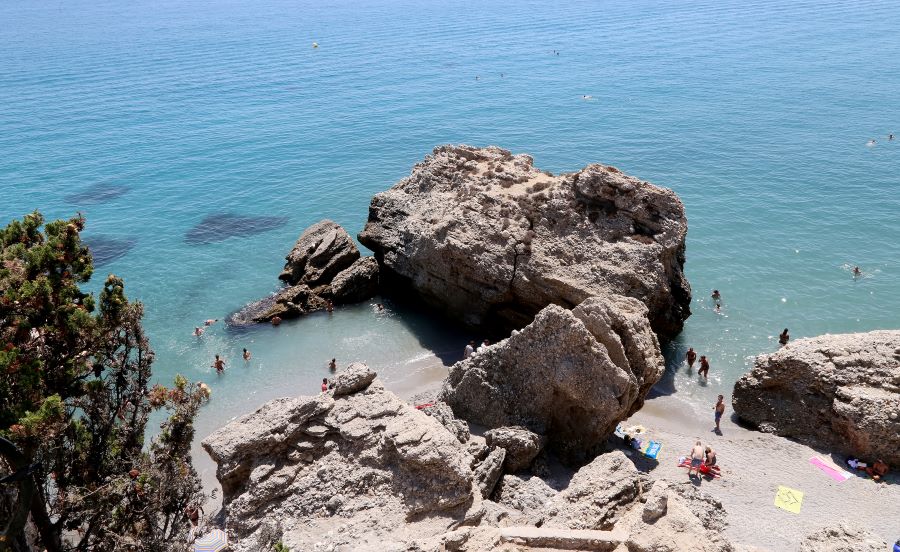Visit Nerja Spain – A relaxing east coast alternative in the Costa del Sol
I decided to visit the eastern coastal area of Nerja, about an hour’s drive east of Malaga city. In spite of the busy and popular tourist locations from Malaga, Nerja is more laidback and attracts a Spanish visitor to the area. I enjoyed visiting the coastal city with its Old Town, gorgeous beach areas, Iconic caves and other interesting to visit in the region.
I’ll share some of my favorite places to explore in Nerja town along with other local sites and attractions to visit on the east side of the Costa del Sol. If you are looking to visit more low key and not as touristy locations compared to places like Torremolinos, Marbella or Benalmadena, then the coastal town of Nerja should hit all the right spots for you to visit this eastern most Costa del Sol location..
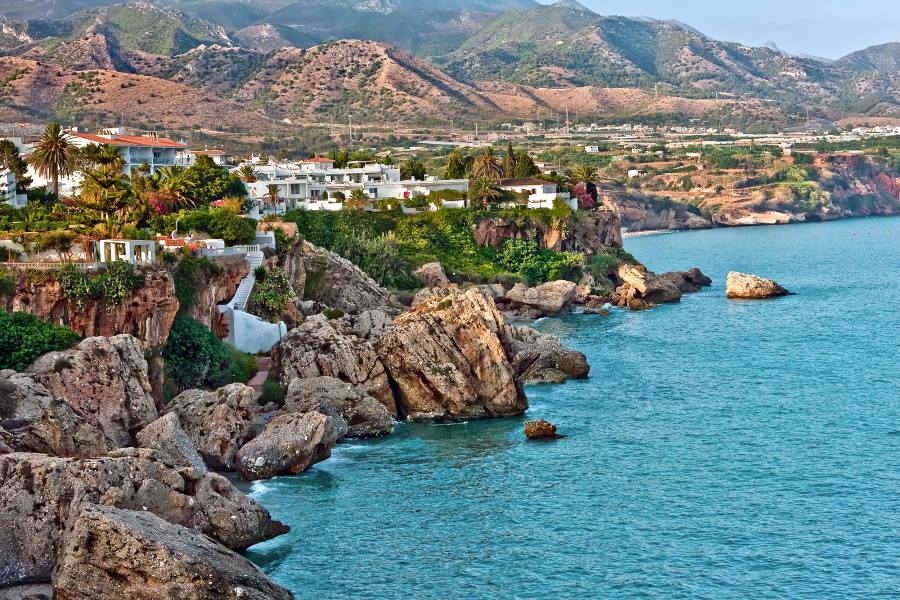
Why visit Nerja, Spain
Nerja, a small coastal town in southern Spain’s Andalusia region, offers a laid-back alternative to the busier Costa del Sol spots. It has a charming old town with whitewashed buildings, narrow pedestrian streets, and a relaxed café culture that still feels more local than tourist-heavy. The town is best known for the Balcony of Europe, a scenic viewpoint overlooking the Mediterranean, and the impressive Nerja Caves with ancient stalactites and cave art. Beaches here range from quiet coves to livelier stretches of sand, all backed by the Sierra Almijara mountains, which add a rugged edge to the coastal views. It’s a great base for exploring both nature and history without the noise of big resorts.
Where is Nerja located
Nerja is located on the southern coast of Spain in the Andalusia region, specifically in the province of Málaga. It sits along the Mediterranean Sea on the eastern edge of the Costa del Sol, about a 45-minute drive from the city of Málaga. Nestled between the sea and the Sierra Almijara mountains, its position gives it a unique mix of coastal charm and natural scenery. Its location makes it easy to explore both the beaches and nearby mountain trails, while also offering access to other Andalusian towns and cultural sites.
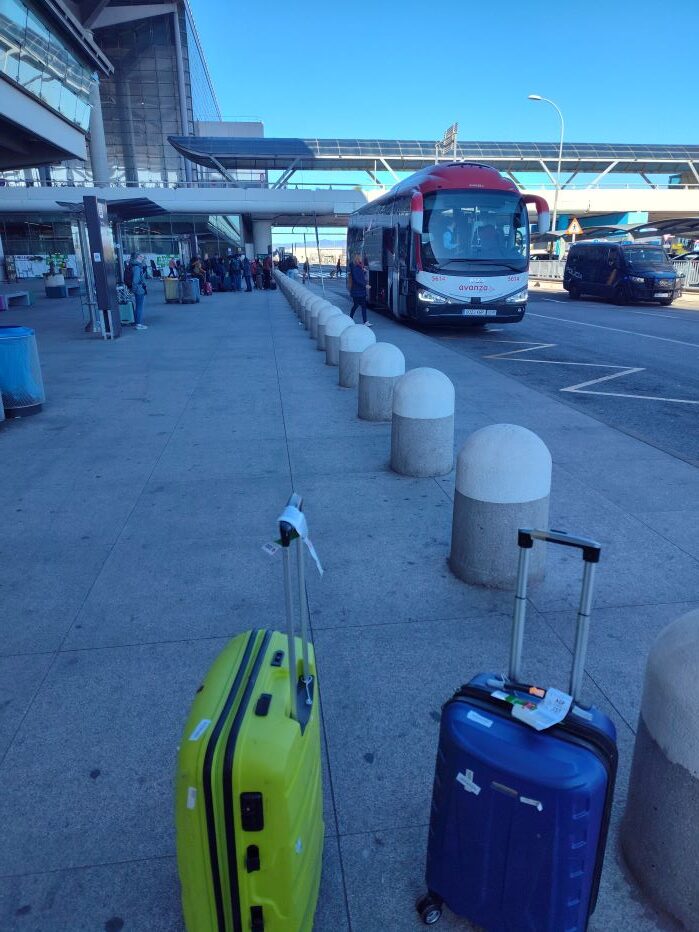
How to get to Nerja
Here are the main transportation options to getting into Nerja
How to Get to Nerja, Spain – Outline
- By Air
- Nearest Airport: Málaga-Costa del Sol Airport (AGP)
- Located about 70 km (43 miles) from Nerja
- Serves international and domestic flights
- From Málaga Airport to Nerja
- By Car
- Drive east via the A-7 highway (approx. 45–60 minutes)
- Car rentals available at the airport
- By Bus
- Take the airport bus or train to Málaga bus station
- Then take a direct ALSA bus to Nerja (approx. 1.5 hours)
- By Taxi or Private Transfer
- Taxis and pre-booked transfers are available (takes about 50–60 minutes)
- More expensive but convenient with luggage
- By Car
- By Train
- No direct train to Nerja
- Take a train to Málaga María Zambrano station, then transfer to a bus
- By Bus from Other Cities
- Regular ALSA bus services from Granada, Almuñécar, and other Andalusian towns
- Málaga is the main hub for bus connections to Nerja
- By Tour or Shuttle
- Some travel agencies and tour companies offer day trips or transfers to Nerja from Málaga or nearby towns
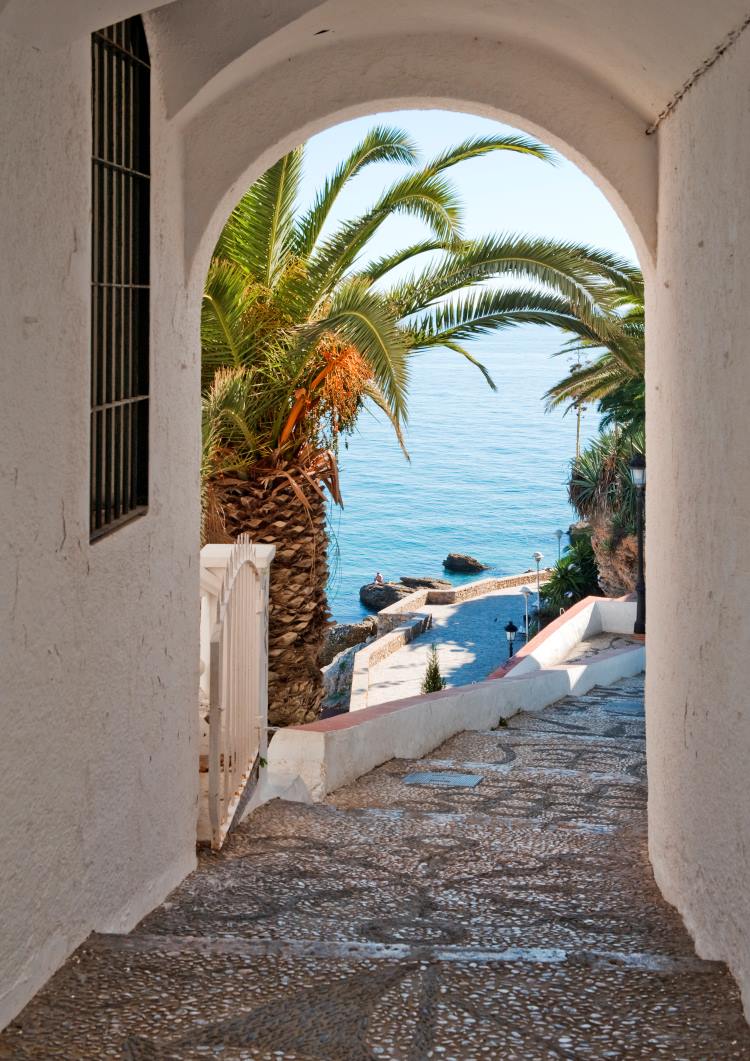
Top attractions and activities to do in Nerja
When you arrive town, there’s quite a few popular places to visit in and around town, you can easily travel by foot or take local transportation or taxi to get to more outlying areas. Also, consider taking some of these complete guided tours to give you a look at many of the attractions here.
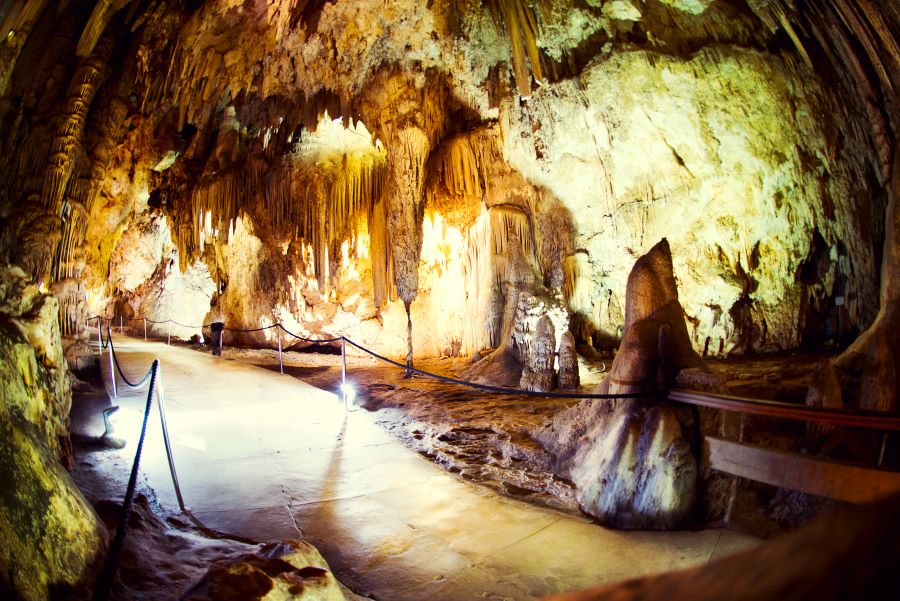
Nerja Caves (Cuevas de Nerja)
The Nerja Caves, or Cuevas de Nerja, are a series of massive caverns located just outside the town, discovered in 1959 by a group of local boys. Stretching over 4 kilometers, though only a portion is open to the public, the caves are known for their dramatic rock formations, including towering stalactites and stalagmites, and one of the world’s largest natural columns. Some chambers are so large they’ve been used for concerts, thanks to their natural acoustics. The caves also hold archaeological significance, with ancient cave paintings and signs of human habitation dating back thousands of years. It’s one of the most unique and memorable sights in the region, offering both geological wonder and a glimpse into prehistoric life.
Check out the Nerja website here for more details
-
- Vast underground caverns with impressive stalactites and stalagmites
- Features one of the world’s largest columns and prehistoric cave paintings
- Hosts occasional concerts in a natural auditorium space
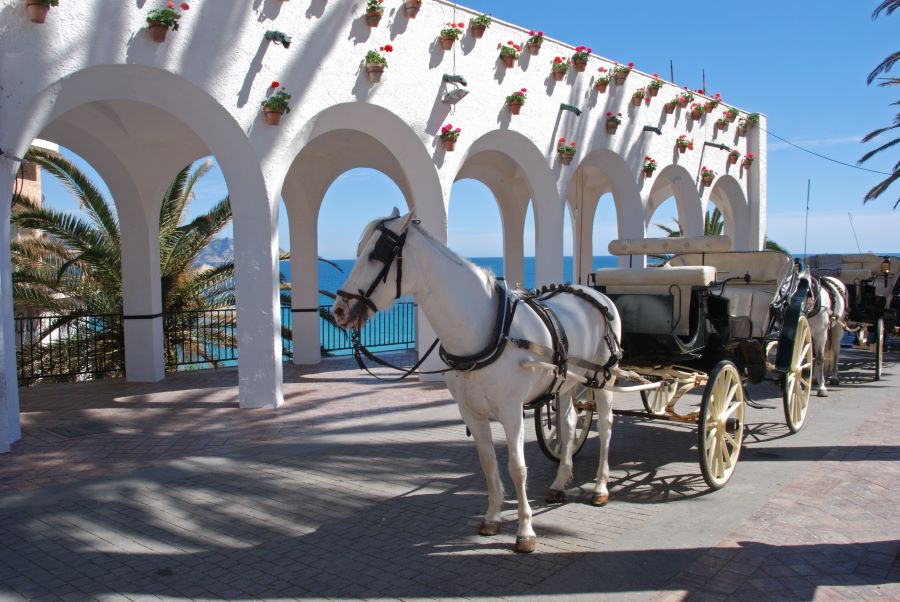
Balcon de Europa
The Balcón de Europa is a wide, palm-lined promenade and viewpoint that sits on a cliff in the heart of Nerja, offering sweeping views of the Mediterranean Sea and the coastline below. Once the site of a 9th-century fortress, it’s now a popular gathering spot for both locals and visitors, surrounded by cafes, ice cream shops, and restaurants. The area has a relaxed, open feel, with benches, street performers, and plenty of photo opportunities. It’s especially lively in the evenings, when people come out for a stroll or to watch the sunset. The name, given by King Alfonso XII during a visit in the 1880s, reflects its open, panoramic setting—like a balcony looking out over Europe’s southern edge.
-
- Scenic promenade and viewpoint overlooking the Mediterranean
- Central meeting spot with cafes, restaurants, and street performers
- Great place for photos, especially at sunset
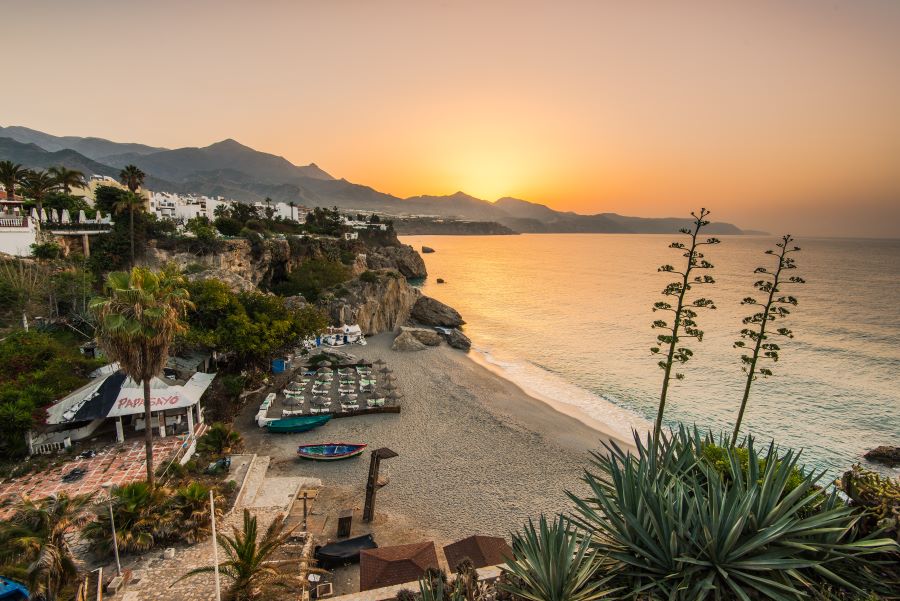
Beaches and Coves
Nerja is known for its mix of sandy beaches and hidden coves, many with a more natural, unspoiled feel compared to other parts of the Costa del Sol. Playa Burriana is the largest and most developed beach, with sunbeds, restaurants, and water sports, making it ideal for a full beach day. Closer to the town center, smaller spots like Playa Calahonda and Playa El Salon offer a more relaxed atmosphere, tucked beneath cliffs with clear, calm water. For a quieter experience, Playa de Maro—just outside town—is a local favorite for snorkeling and kayaking, surrounded by farmland and steep rock formations. The coastline is rugged and varied, so it’s easy to find both lively and peaceful stretches of shore depending on your mood.
-
- Playa Burriana – Most popular beach with sunbeds, water sports, and restaurants
- Playa Calahonda – Smaller, picturesque beach near the Balcón de Europa
- Playa de Maro – More secluded, ideal for snorkeling and kayaking
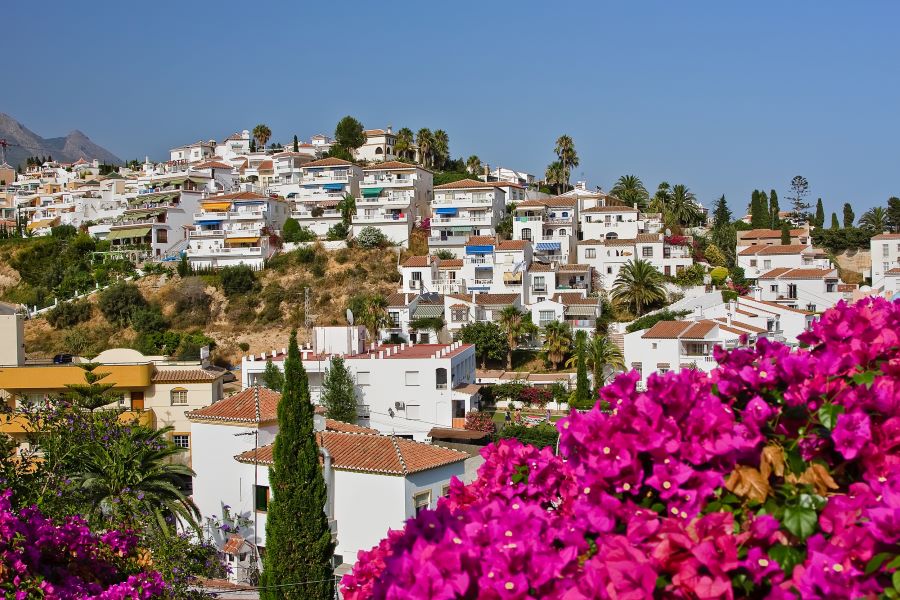
Frigiliana Day Trip
Frigiliana is a picturesque village in the hills above Nerja, known for its whitewashed houses, narrow cobbled streets, and vibrant floral displays. The old Moorish quarter, with its steep alleys and Mudejar architecture, offers a glimpse into the town’s rich history. Visitors can explore landmarks like the Church of San Antonio and the Fuente Vieja, or enjoy panoramic views from various viewpoints around the village. Local shops and cafes provide opportunities to sample regional specialties, such as dishes made with the town’s renowned sugar cane honey. Frigiliana’s unique blend of history, culture, and scenic beauty makes it a worthwhile day trip from Nerja.
Check out my website post on visiting Frigiliana as a day trip here for more details.
-
- Charming whitewashed village just a 15-minute drive from Nerja
- Known for cobbled streets, Moorish architecture, and local crafts
Hiking and Outdoor Activities
The area around Nerja offers a good mix of hiking and outdoor activities for those who enjoy nature without needing extreme terrain. One of the most popular routes is the Río Chíllar hike, where you walk through a shallow riverbed flanked by steep canyon walls—ideal on a hot day and manageable for most fitness levels. The nearby Sierra Almijara mountains provide more traditional hiking trails with scenic views of the coastline, forested slopes, and rugged peaks. For sea lovers, kayaking along the cliffs between Nerja and Maro reveals hidden beaches, caves, and clear blue water perfect for swimming or snorkeling. Whether you’re up for a gentle walk or something more active, the region has enough variety to keep it interesting without being overwhelming.
-
- Trails in the nearby Sierra Almijara mountains for nature walks and scenic views
- Popular route: Rio Chillar hike – walk through riverbeds and natural pools
- Kayaking and paddleboarding along the coast
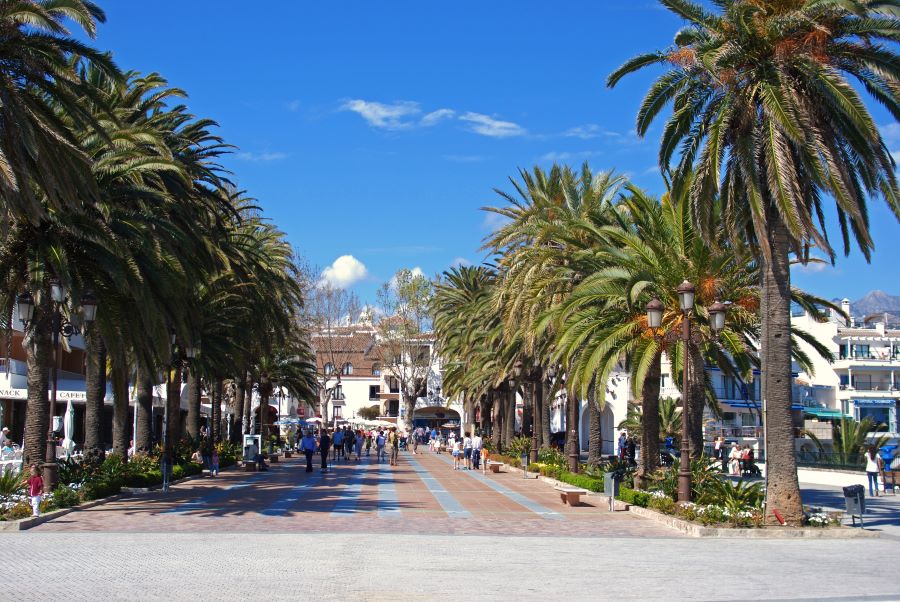
Historic Sites of Nerja
Nerja’s historic sites reflect its mix of cultural influences and coastal heritage. In the heart of town, the Church of El Salvador stands out with its simple white façade and mix of baroque and Mudejar architectural styles, dating back to the 17th century. A short walk away, you can find remnants of Nerja’s fishing past in the old town’s narrow streets and traditional homes. Just outside the center, the 19th-century Aqueduct of El Águila spans a deep ravine with striking red brick arches—still intact and used for irrigation. While Nerja isn’t packed with grand monuments, its historic corners are easy to explore on foot and give a sense of how the town has evolved from its Moorish roots to a quiet coastal escape.
-
- El Salvador Church – 17th-century church near the Balcón de Europa
- Aqueduct of El Águila – 19th-century aqueduct visible from hiking paths
Local Food and Markets
Nerja’s food scene is a blend of coastal freshness and Andalusian tradition, offering a range of dishes that reflect its seaside location and cultural heritage. A standout is espeto de sardinas—sardines skewered on bamboo sticks and grilled over open flames, best enjoyed at beachside chiringuitos like Chiringuito El Cañuelo or Restaurante Ayo, where the sea breeze enhances the flavor. Seafood lovers will also appreciate pescaito frito, a variety of small fish lightly battered and fried until golden, commonly served with a wedge of lemon .
Tapas culture thrives here, with bars like Bar El Pulguilla and Mesón Andaluz offering small plates ranging from patatas bravas to chorizo al vino, encouraging a social and varied dining experience . For a refreshing start or a light meal, try ajoblanco, a cold almond and garlic soup garnished with grapes or melon, available at spots like Restaurante La Marina
Sweet treats are also part of the local fare. Dulce de higo, sweet figs cooked in syrup, and tarta de Santiago, an almond cake dusted with powdered sugar, are popular desserts that pair well with a glass of local sweet wine .
For those interested in local produce and goods, the Tuesday market on Calle Cisne hosts over 180 stalls selling fresh fruits, vegetables, spices, and handmade crafts. On Sundays, the same location transforms into a flea market, offering antiques, second-hand items, and unique finds .
Whether you’re savoring grilled sardines by the beach, sampling a variety of tapas, or exploring the local markets, Nerja offers a culinary experience that combines traditional flavors with the charm of its coastal setting.
-
- Tapas bars and seafood restaurants in the old town
- Weekly open-air market (Tuesdays) for local produce, crafts, and souvenirs
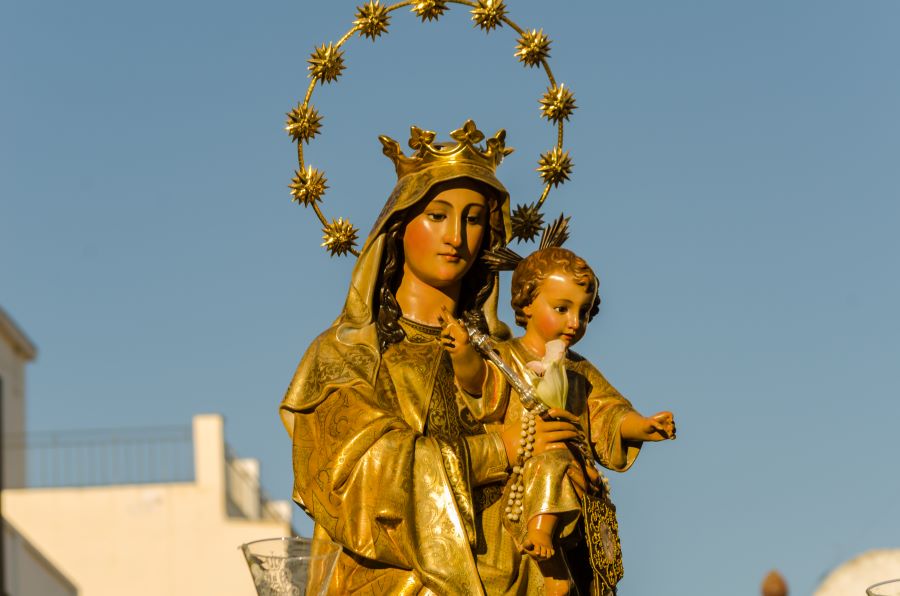
Cultural Events and Festivals
Nerja’s calendar is filled with festivals that reflect its cultural diversity and strong community spirit. In February, the town comes alive with the Nerja Carnival, featuring elaborate costumes, parades, and a unique “funeral” procession for the fictional character Chanquete. Spring brings Semana Santa (Holy Week), marked by solemn religious processions through the streets. May is notable for the Cruces de Mayo, where floral crosses adorn public spaces, and the San Isidro Pilgrimage on May 15, a vibrant procession of decorated floats and traditional attire heading from the town center to the Nerja Caves.
Summer festivals include the Noche de San Juan on June 23, where locals gather on beaches to light bonfires and celebrate the arrival of summer. In July, the Virgen del Carmen festival honors the patron saint of fishermen with a maritime procession and fireworks. August features the Fiesta Blanca, a beach party where attendees dress in white, and the nearby village of Frigiliana hosts the Three Cultures Festival, celebrating Christian, Muslim, and Jewish heritage with music, food, and cultural events. with the Three Kings Parade on January 5, delighting children with sweets and gifts, and New Year’s Eve celebrations at the Balcón de Europa, featuring fireworks and the tradition of eating twelve grapes at midnight.
Check out the Nerja festival calendar here for more details
-
- Semana Santa (Holy Week) processions in spring
- Nerja Feria in October with parades, live music, and traditional celebrations
Weather and Best Time to Visit Nerja
Nerja enjoys a Mediterranean climate with mild winters and hot, dry summers, making it a year-round destination depending on your travel style.
Spring (March to May): This is one of the most pleasant times to visit. Temperatures gradually rise, typically ranging from 18°C to 24°C (64°F to 75°F), and the landscape begins to bloom. It’s a great season for walking, exploring the countryside, and enjoying the town before the summer crowds arrive.
Summer (June to August): These are the hottest and busiest months in Nerja. Daytime temperatures often reach between 30°C and 35°C (86°F to 95°F), perfect for beach days, swimming, and outdoor dining. The town buzzes with activity, festivals, and tourists, so expect a lively vibe and busier streets.
Autumn (September to November): Early autumn still feels like summer, especially in September and October, with temperatures between 24°C and 29°C (75°F to 84°F). It’s a sweet spot for travelers looking for warm weather without the peak season crowds. November starts to cool down, averaging around 19°C (66°F), but is still comfortable for sightseeing.
Winter (December to February): Winters are generally mild, with temperatures from 14°C to 17°C (57°F to 63°F). While it’s quieter during these months, it’s a good time to enjoy the town at a slower pace, explore local culture, and take advantage of hiking trails without the heat.
When to Go: If you’re after sun and sea, summer is your window—just be ready for crowds. For a more relaxed experience with pleasant weather, spring and early autumn are the best bets. These shoulder seasons strike a balance between comfortable temperatures and manageable tourism levels.
Guided Tours to Nerja
If you are looking for unique and fun guided tours to visit Nerja and other attractions and landmarks in the area, check out these fantastic tours below:
From Málaga: Caves of Nerja, Nerja and Frigiliana Day Tour
Discover the Cave of Nerja, called the “Natural Cathedral of the Costa del Sol”, admire the rock formations, and visit two beautiful and typical Andalucian villages on a guided day trip from Malaga.
Nerja, Frigiliana & El Acebuchal: Full-Day Semi-Private Tour
Further reading – places to visit in the area
If you are exploring more of this area east of Malaga, check out these other posts to explore in the area.
Malaga to Cordoba day trip
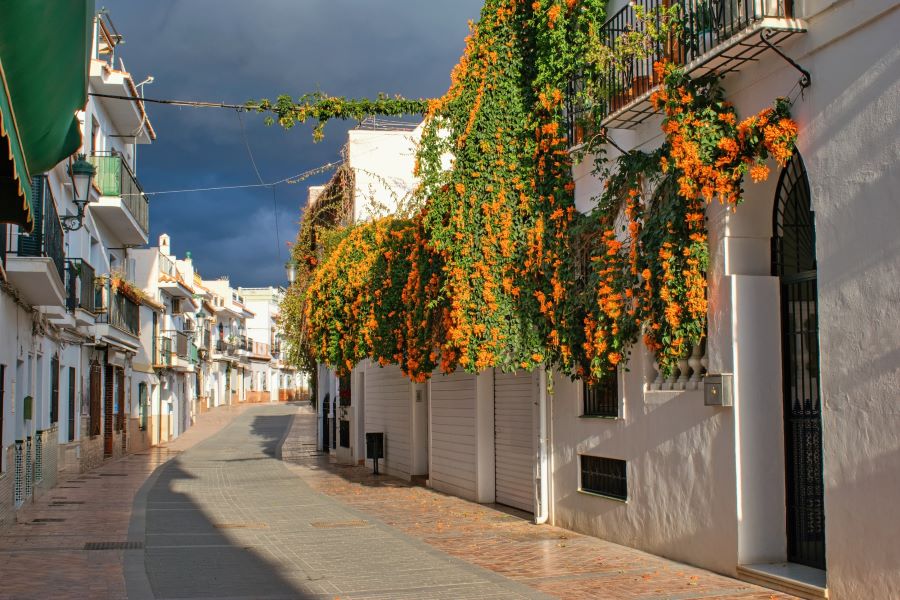
Conclusion
Visiting Nerja, Spain is really a unique visit and experience to the eastern part of the Costa del Sol that typically attracts more Spanish visitors and travelers exploring the areas in the east side of Malaga Province. Thanks for checking out this post on Nerja on Visit Spain and Mediterranean, please do check out other posts on the website that might interest you.

About author – Noel Morata
After relocating from the United States to Andalusia in 2024, I’ve made it my mission to discover every corner of Spain. Based just east of Granada, I’ve spent over 12 months exploring Andalusia province and the rest of Spain, including multiple extended visits to Granada throughout different seasons. My background in Spanish cultural studies and years of residence and exploring all of Spain have given me unique insight into the region’s historical significance, local customs, and culinary traditions.
I regularly update my guides with the latest information gathered through personal visits and relationships with local tourism officials, always seeking what’s new and exciting in each destination. As a self-proclaimed foodie, I’m passionate about discovering authentic local markets and regional specialties.
Disclosure – some of the links above to various tours, transportation and hotels are affiliate links that benefits our site if you book here and we appreciate your support. The links are competitive, and you are not paying above what other affiliates provide.
Last updated: April 2024 based on my most recent visit

